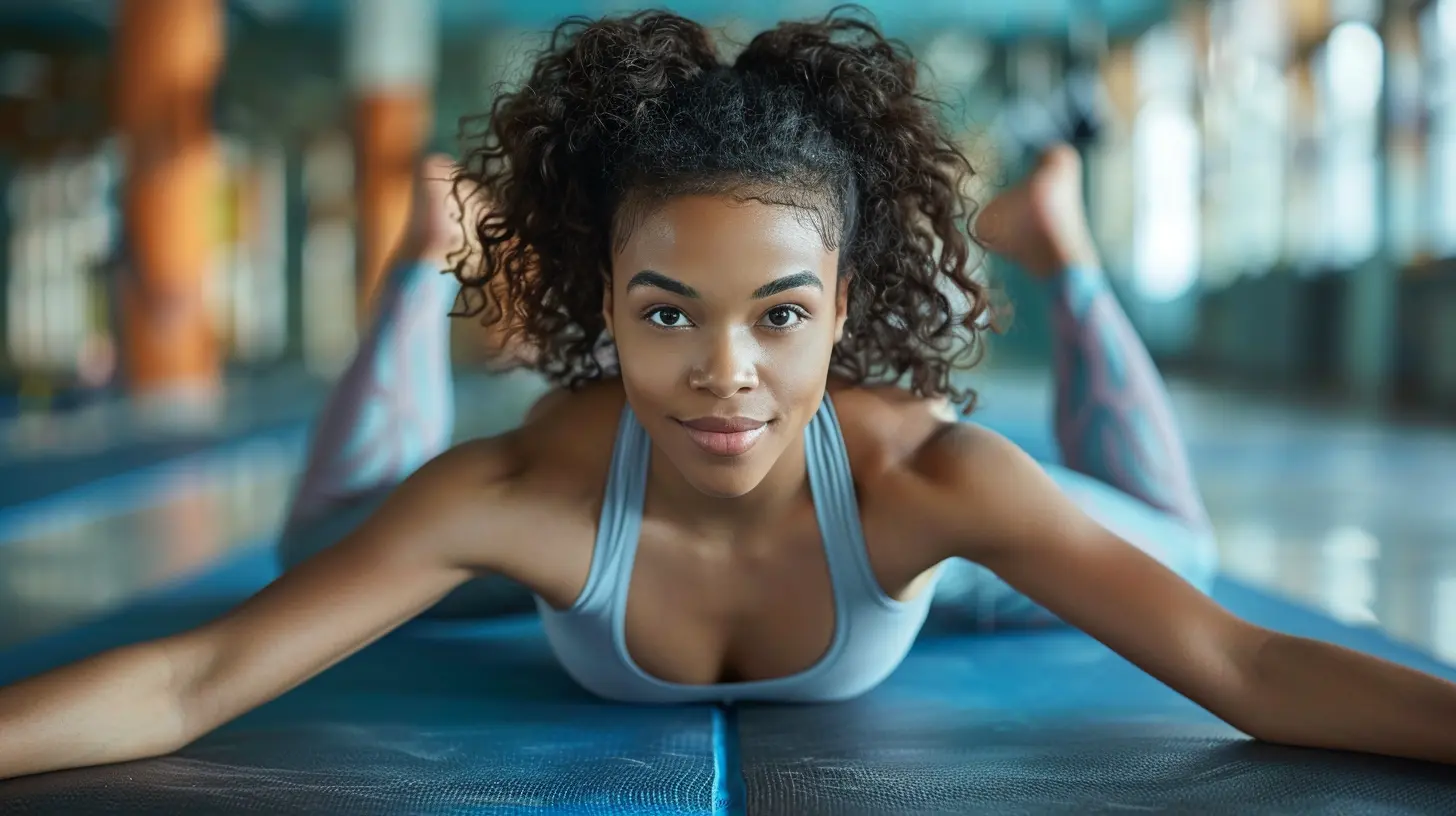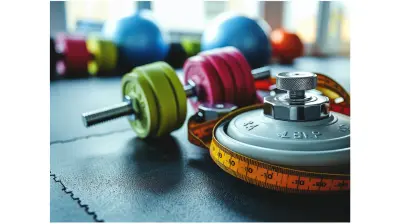Why Flexibility Training Is Crucial for Overall Fitness
17 May 2025
Let’s get one thing straight—if you think touching your toes is just a cute party trick or something reserved for ballerinas and yoga enthusiasts, think again. Flexibility isn’t the red-headed stepchild of fitness. In fact, it’s the unsung hero, often overshadowed by its flashier siblings: Strength and Cardio. But make no mistake—flexibility training is your body’s secret weapon. It's time we give it the standing ovation it deserves (and yes, you should be able to stand and clap without pulling a hamstring).
So grab your foam roller and ditch the “I’ll stretch later” excuse, because we’re diving deep into why flexibility training is crucial for overall fitness. Spoiler alert: It ain't just about looking cool in downward dog.
Wait, What Is Flexibility Training Anyway?
Imagine your muscles as a set of rubber bands. When they're warm, well-oiled, and taken care of, they stretch smoothly and bounce right back. But if neglected, they become stiff, brittle, and dangerously close to going snap. That’s where flexibility training steps in.Flexibility training includes activities that increase the range of motion of your joints and muscles. Think static stretching, dynamic stretching, yoga, Pilates, and mobility drills. It’s the stuff that preps your body to move like a well-oiled machine instead of a rusty lawn mower.
The Ugly Truth: Most People Skip It
Let’s call it like it is—flexibility training is the broccoli of the fitness world. Everyone knows it's good for them, but they’d rather pile on the steak (lifting weights) and fries (treadmill sprints) than bother with it. You’ve probably said, “I’ll stretch after my workout” only to end up skipping it because Netflix was calling. Been there, stretched that.But shoving flexibility into the “optional” pile is like skipping the foundation while building a house. Sure, the walls may look great for a while, but good luck surviving a storm.
The Perks of Being a Bendable Human
Yes, stretching can be boring. No, it doesn’t give you bulging biceps or Instagram-worthy sweat pics. But flexibility training brings more benefits than a Black Friday sale at your favorite fitness store. Let’s break it down.1. Reduced Risk of Injury
Ever suddenly twisted your back tying your shoes? Congrats—you’ve officially experienced the wrath of tight, unconditioned muscles. Flexibility training increases your muscle elasticity and joint mobility, which makes you less likely to injure yourself during workouts or while doing everyday tasks… like sneezing too hard.Bottom line: flexible muscles are forgiving muscles.
2. Better Posture (Bye-Bye, Quasimodo Shoulders)
You know that hunched-over “I’ve-been-on-my-laptop-for-9-hours” look? Blame poor flexibility, especially in your hips, hamstrings, and spine. When your muscles are tight, your body compensates in all the wrong places. Hello, imbalances!Stretching helps lengthen those perpetually shortened muscles. Better flexibility = better alignment. Better alignment = posture that doesn’t scream “I live on the couch.”
3. Improved Performance (Yes, Even in the Gym)
You wouldn't take a Ferrari off-roading, right? Then why are you trying to deadlift with joints that move like a pair of rusty hinges?A greater range of motion boosts strength because your muscles can work through a full, efficient movement pattern. Whether you’re squatting, running, dancing badly at weddings, or doing anything in between, flexibility training makes everything smoother, safer, and stronger.
4. Less Muscle Soreness (Praise Be)
DOMS (Delayed Onset Muscle Soreness) doesn’t mess around. One minute you’re feeling the post-leg-day glow, and the next you’re crawling up the stairs like a wounded soldier.Stretching helps flush out lactic acid and circulates blood to those aching muscles. Translation? Quicker recovery, less whining.
5. Enhanced Mind-Body Connection
You know what happens when you slow down and stretch? You actually feel your body. Stretching is like sending your muscles a love letter—“Hey, I haven’t forgotten you. Let’s chill for a sec.”It’s calming, grounding, and even borderline meditative. Ever wonder why yogis seem so zen? It’s not just the incense.
Flexibility vs. Mobility: What’s the Difference?
If you thought flexibility and mobility were the same thing, sit down—we need to talk.- Flexibility is the ability of your muscles to stretch.
- Mobility is how freely your joints move.
You can be flexible and still move like a robot if your joints are locked up. Think of flexibility as the rubber band, and mobility as the range the rubber band can move through when attached to something.
Guess what? You need both.
“But I’m Not Flexible” Is Not a Get-Out-of-Stretching Card
Saying “I’m not flexible” as an excuse to avoid flexibility training is like saying “I’m hungry, so I won’t eat.” Uh, what?Flexibility doesn’t magically appear overnight. It’s a skill, just like strength or speed. Nobody’s born touching their toes (okay, maybe babies, but they cheat). You train for flexibility the same way you train for everything else—with consistency and a little bit of grit.
So yes, you can get more flexible. No, it’s not too late. Yes, even if your hamstrings currently hate you.
When Should You Stretch?
Here’s the golden rule: different stretches for different times.Before a Workout: Dynamic Stretching
Think leg swings, arm circles, high knees—all those odd-looking movements you secretly judge people for doing at the gym? They’re actually smart. Dynamic stretching warms up your muscles and gets your joints ready for action.After a Workout: Static Stretching
This is where you pause, hold, and breathe. You'll want to target the muscles you just worked on. Think: quad stretches, hamstring reaches, and those fan-favorite seated forward folds.Throughout the Day: Micro-Stretch Breaks
Yep, you heard that right. Stretch in between Zoom calls. Stretch while you microwave your coffee for the 5th time. Stretch during commercials (do people still watch those?). Your body will thank you.How Much Flexibility Training Do You Really Need?
The magic number? About 10–15 minutes a day. That’s less time than it takes to scroll through your “fitspiration” feed on Instagram.Still too much? Fine. Start with three times a week, on your rest days or after workouts. Add some yoga sessions if you're feeling extra fancy. The goal is consistency over intensity—no need to tie yourself into a pretzel on day one.
Tips to Actually Stick With It
Alright, so you’re convinced flexibility is important. But how do you make it stick? Here are a few not-so-boring strategies:- Make It Part of Your Routine: Treat stretching like brushing your teeth. Non-negotiable.
- Pair It With Something Fun: Turn on your favorite playlist or podcast. Multitask like a boss.
- Stretch with a Buddy: Accountability, plus someone to laugh with when you both attempt pigeon pose.
- Track Your Progress: Can’t touch your toes yet? Cool. Track how close you’re getting. Celebrate the wins!
Flexibility and Aging: The Real Plot Twist
Hate to break it to you, but we’re all getting older. And the older we get, the more mobility and flexibility we lose—unless we actively fight back. It’s like rust-proofing your car. You don’t wait until parts fall off to care.Want to stay active, turn your neck while driving, and get off the floor without help when you're 80? Yeah. Flexibility training might be the only anti-aging secret that actually works.
So… Is It Time To Flex Your Flexibility?
Absolutely. You don’t have to become a contortionist or start juggling yoga blocks. But you do have to start moving better, and that starts with training those underappreciated muscles to stretch, bend, and flow.Stretching isn’t just a warm-up or an afterthought—it’s a core part of being functionally fit. Like, real-life fit. The kind of fit that lets you run, lift, dance, twist, reach, and live without your joints filing a formal complaint.
So go ahead—roll out the mat, take a deep breath, and reach for those toes (even if they seem like they're a country mile away).
Your body will thank you. Eventually.
all images in this post were generated using AI tools
Category:
ExerciseAuthor:

Angelo McGillivray
Discussion
rate this article
3 comments
Knox McCloud
Stretch your way to success!
June 5, 2025 at 2:31 PM

Angelo McGillivray
Absolutely! Flexibility training enhances overall fitness by improving mobility, reducing injury risk, and promoting better performance in all activities.
Kendall Reilly
Flexibility training enhances mobility, reduces injury risk, and improves performance, making it an essential component of a balanced fitness regimen.
May 23, 2025 at 3:28 AM

Angelo McGillivray
Thank you for your insightful comment! You're absolutely right—flexibility training is indeed vital for enhancing mobility and minimizing injury risk, ultimately boosting overall performance.
Evren Morris
Embrace flexibility training—it’s the fun side of fitness! Stretch, bend, and feel great every day!
May 20, 2025 at 2:38 PM

Angelo McGillivray
Absolutely! Flexibility training not only enhances physical performance but also boosts overall well-being. Embrace it for a happier, healthier you!



